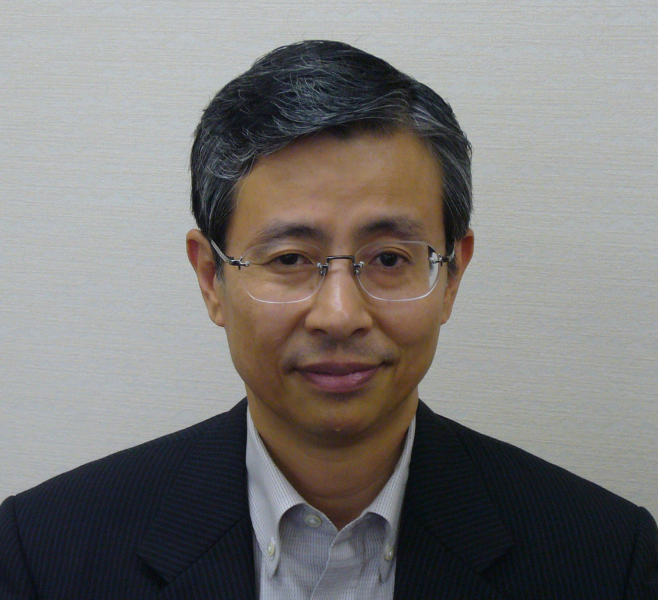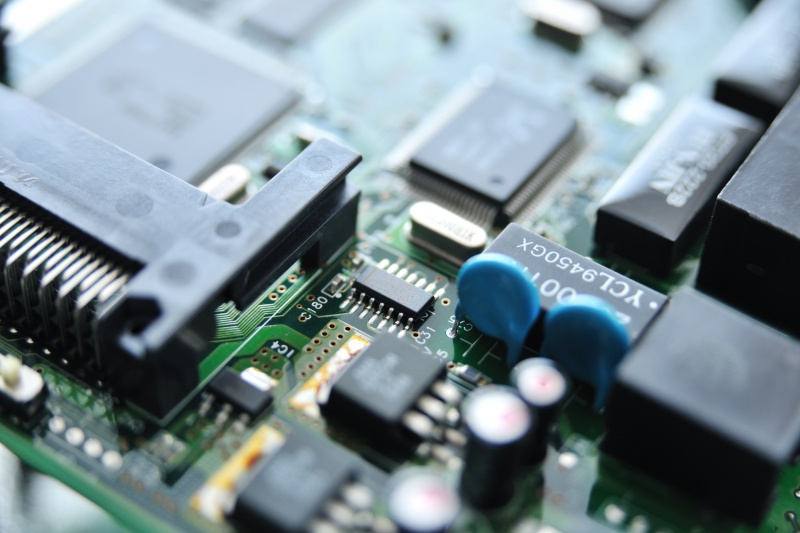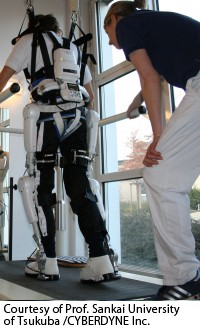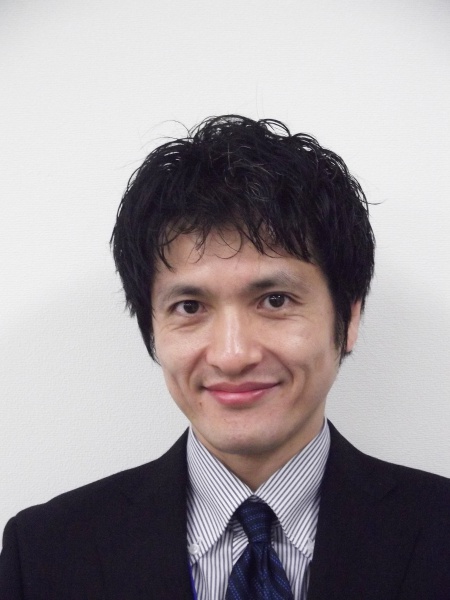Manufacturers Are Avoiding Price Competition and Achieving Growth by Creating Value
Japanese manufacturers are currently at a big turning point. In the television industry, known to be their forte, Japanese manufacturers used to have global brands, superior competitiveness, and technological capabilities. However, Sony, Sharp, and Panasonic, all of which had displayed strong competitiveness in this industry with their high-resolution digital TVs, have undergone serious financial crises. All three manufacturers had to remove their top managers. They were also forced to make significant cuts to their workforce. These developments gave rise to the pessimistic view that Japan’s manufacturing-based national development was beginning to decline.
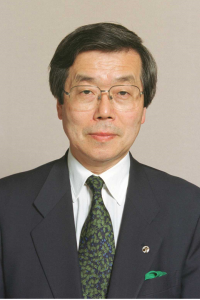
KOJIMA Akira, Member, Board of Trustees, and Adjunct Professor, National Graduate Institute for Policy Studies (GRIPS); Trustee, JapanCenter for Economic Research (JCER)
However, Japanese manufacturers are maintaining their competitive advantage in global markets and securing high profits in sectors including machine tools and high-quality components and materials, such as carbon fiber. Among Japanese products, robot suits, which assist people who have difficulty walking, are drawing attention. A rapid paradigm shift seems to be taking place in the manufacturing industry in terms of technology, commodities, and business administration methods. The companies on the forefront of these trends are increasing their growth potential. Many manufacturers have been able to continue to secure high profits without getting caught up in the severe price competition known as price-slashing.
At the bottom of “Smiling Curve”
There is an ongoing debate in the manufacturing industry over the “smiling curve.” This debate centers around how much value is added in each manufacturing stage and sector. To illustrate this argument, a graph is drawn with the increase in added value plotted on the Y-axis, and the processes that link upstream operations with their downstream counterparts, such as research and development (R&D), component production, assembly, sales and after-sales service, or the flow of the value chain, plotted on the X-axis, respectively. The graph shows that added value is high in the upstream process of R&D and the downstream process of after-sales service. Value is the lowest during the assembly process. The plotted graph has a semicircular shape in which the assembly process in the center forms the bottom and value rises on both sides as the distance from the assembly process increases. This pattern is what we call a “smiling curve.”
Companies in the assembly sector, at the bottom of this smiling curve, are the ones facing difficulties in the Japanese manufacturing industry today. They are having a hard time because many companies, which have entered the sector from China and other emerging economies with the advantages of low costs and low prices, are substantially increasing price competition.
Republic of Korea (ROK), a member of the Organization for Economic Cooperation and Development (OECD), also known as the “Club of Developed Nations,” is entering and making its presence felt in this severe price competition, too. ROK can do this because, as only one or two companies operate in the country’s respective manufacturing sectors, they enjoy virtually monopolistic profits, and can compete with companies in emerging economies through huge capital investments. The dominant position Samsung Electronics holds in ROK’s home electrical appliance sector is evidence of this.
In stark contrast, many home electrical appliance manufacturers in Japan are finding themselves in a morass of excessive competition. They can’t make sufficient investments in their plants, equipment, or R&D because the cutthroat competition prevents them from securing enough profits. Japanese companies in this situation are working to reduce their personnel and other costs to cope with their rivals from emerging economies who are armed with low prices. However, there is only so much they can cut costs. A bitter competition involving companies from around the world and price destruction is in progress in this environment.
A system where just one or two companies operate in key industries emerged in ROK after the country’s economic crisis in 1998. This system is a product of the policy the ROK government adopted at the time of allowing companies that had lost their competitiveness to fall by the wayside. In Japan, companies that encountered financial difficulties over the course of the long economic stagnation that followed the bursting of the economic bubble somehow managed to survive. As a result, excessive competition is still present in the Japanese manufacturing industry.
Free from sever price-destroying competition
There is another side to Japanese manufacturers, however, involving robot suits and high-quality components, both of which Toyo Keizai magazine introduced in a special feature article. These products are exempt from severe price-destroying competition because they are backed by advanced technologies and a level of quality that companies in other countries cannot match.
Professor Yoshikawa Hiroshi of the University of Tokyo analyzes this as follows: “The most important thing for economic growth is the kind of innovation that creates new products, new services, and new demand. Japanese companies devoted themselves too much to process innovation for cutting costs, and treated product innovation for creating added value too lightly over the course of the prolonged deflation. Japan’s fifteen-year-long deflation created a deflationary bias toward innovation at Japanese companies. A lack of product innovation caused the entire economy to stagnate for a long time and deflation to drag on. A vicious circle of weakening product innovation emerged as a result.”
The special feature article stated above, however, highlighted those companies that are sustaining and strengthening their global competitive advantage without falling into this deflationary bias.
Robot suits are wearable robots that help people with walking disabilities—due to a cerebral infarction, cerebral hemorrhage, traffic accident, or similar—to walk. The signal to move the muscles travels from the brain to the nerves and muscles when a person in a robot suit tries to move his or her body. This signal travels to the surface of the skin, too, as a faint electrical impulse. Sensors attached to the knees and thighs of the robot suit wearer perceive this signal. A tiny computer attached to the person’s waist analyzes this signal, drives the power units attached to his or her legs, and helps them to walk.
In the beginning, these robot suits were extremely heavy and looked like armor. However, their weight has been reduced significantly, paving the way to their practical application. Some of these products have even been certified as medical equipment in Europe. In addition to helping people with a functional disorder caused by an accident, robot suits have been introduced to nursing care for the elderly. The special feature article discussed a robot suit made by a startup called Cyberdyne. However, automobile manufacturers are also working to develop these robots.
Honda Motor, which has continued to develop a bipedal walking robot, is now developing a walking support robot by applying the technologies it used for the biped robot. Toyota Motor’s high technology became a popular topic of conversation at the International Exposition in Shanghai in 2010, where it introduced a robot that plays the violin. Using this technological capability, Toyota is also developing a walking support robot. The robot suit under development at Toyota estimates the walking intentions of its wearer through a thigh sensor for controlling posture as well as sensors attached to the sole of each foot, and supports knee movements when he or she tries to take a step forward.
Toyota and Cyberdyne are also working on developing nursing care robots that provide support to caregivers when they move people from their bed to a wheelchair. The number of elderly people requiring nursing care is on the rise worldwide. The potential demand for nursing care and walking support robots is huge.
Demand Creation
The late Steve Jobs made a comment to the effect that “the products consumers really need haven’t been developed yet.” Certainly, there was no demand for the iPod before it was developed. There lies the importance of the “kind of product innovation that generates new demand” that Professor Yoshikawa pointed out.
The competitiveness of Japanese materials manufacturers is also attracting attention. Boeing finds the carbon fiber and other high-technology materials made by Toray Industries to be indispensable for enhancing the fuel efficiency and performance of its aircraft. Products like these have an overwhelming competitive advantage, because no other company can manufacture them. The smiling curve for these companies becomes almost a horizontal straight line at high added value levels.
How can companies avoid the cutthroat price competition caused by price-slashing? The answer to this question lies in differentiating their manufacturing, such as developing original patent-level technologies and advanced manufacturing technologies.
Japanese companies in the machine industry are in good shape in this respect. FANUC maintains the largest share of the global market for numerically controlled equipment for machine tools. The company’s operating profit margin is over 40%. FANUC is the only company of its kind that avoids excessive price competition and price destruction. NSK is one of the leading dentistry product manufacturers in the world. The company boasts a high profit margin, too. There are also other machine industry members in good shape. These include Hamamatsu Photonics, which holds a 90% share of the global market for photomultiplier tubes; Makita, the second largest power tool supplier in the world; Nidec Copal, which has an 80% share of the global market for compact digital camera shutters; Horiba, which supplies 80% of global demand for engine measuring instruments; Murata Manufacturing, the world’s leading ceramic capacitor supplier; and Ushio, which holds the largest share of the global market for industrial lamps. All these manufacturers have overwhelming competitiveness and market share. They sustain high earnings as a result of their strengths.
These companies successfully operate in the high-added-value sectors on the left and right sides of the smiling curve, which correspond to the upstream and downstream processes, respectively, while other Japanese manufacturers suffer in the hell of the enormous price competition and global price-slashing in the bottom section of the smiling curve.
Machine tool manufacturers with advanced technologies, such as FANUC, are also exporting to companies that are very competitive. Companies that adopt the advanced machine tools from these kinds of manufacturers increase their ability to manufacture commodities and join the assembly sector at the bottom of the smiling curve. As a result, price competition is further intensified in that sector. Therefore, while process innovations that streamline manufacturing processes are important, companies can’t survive on these innovations alone in a country like Japan, where wages are high. As Professor Yoshikawa pointed out, it seems that the way out for industries in Japan, a high-wage country, lies in the type of product innovations that create demand, where products are developed independently to create new demand.
Paradigm shift in management
The speed of technological transfer is fast, however. Product innovations require a business administration that supports the mechanisms that continuously generate them. Technologies also quickly become obsolete. Home electrical appliance manufacturers that are facing a financial crunch, such as Panasonic and Sony, must find a management model that enhances their strengths through selection and concentration, squarely looking at a paradigm shift in technologies and international competitive frameworks.
Mass media news headlines such as “The Decline of Japanese Manufacturing” and “The Collapse of Products Made in Japan” may grab our attention, but what is actually happening isn’t that simple. We can view these ongoing changes as a management paradigm shift in response to a paradigm shift in technologies and industries.
Some electronics manufacturers are also attempting to increase their competence and earnings power by running comprehensive businesses. For example, they are forming alliances with overseas partners for plant projects abroad, offering services ranging from planning and designing plants to operating them after completion, and cooperating with specialist design and service companies in these processes.
Translated from an original article in Japanese written for Discuss Japan. [November 2013]

